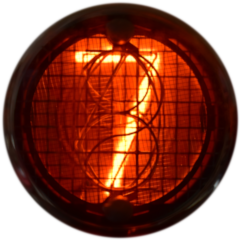I’ve wondered this occasionally over the years, but never got it working.
I tried just putting a dried piece of chicken bone pressed between two plates (mild compressive stress perpendicular to the bone), and using an inverter just like I would use a crystal. It did not work. Maybe I need a really thin segment?
I have no practical application in mind. I might make a CPU from it for Halloween I guess?
I’m not sure if I would classify it as electronics or necromancy, but I thought it was an interesting question to ask here :)
Can you link some of the papers that have attempted/discuss the piezoelectricity of bone?
It sounds fascinating and would probably help inform the process of getting something functioning
Sure. From ancient memory, I think I had looked at this one: https://www.researchgate.net/publication/274365321_On_the_Piezoelectric_Effect_of_Bone
However there’s a weird little caveat – some papers attribute the piezoelectric effect to organic collagen fibers. Others attribute it to the inorganic component (apatite). In the end this paper seemed to have a reasonable measurement process so I’ve just ignored the exact cause of the piezoelectricity for the moment. From their tests, orientation of the bone is highly important.
They use an applied voltage of 100V then amplify (100db). I’m reasonably competent working with moderate voltages, but would prefer to try something under 30v as a matter of convenience (e.g. what I can reach with a DC-DC boost converter).
Normally though, I just hook up a crystal oscillator to a hex inverter @5V or to an MCU with some caps. I’m not entirely sure how I’d build an equivalent circuit at 30V! Doing unnatural things with crystal oscillators hasn’t really come up much in my studies or career.
For higher voltages, you could build a Pierce oscillator from discrete components instead of using a hex inverter.
Right, because I can just build an inverter from discrete transistors. That makes sense. I think that’s what I’ll try next time.
You madlad, I don’t have much to add but this would be pretty interesting if it worked. Presumably uncooked bone? I also think that using a very thin slice would increase the strength of the electric field, since you want to have a small gap between the plates (field strength is volts per meter). Does the orientation of the bone matter? Could you ask a butcher to cut a slice from a large beef bone?
Edit: Also what voltage are you using?
I tried with cooked bone, that tends to be what I have more of lying around :D
I don’t recall the voltage I tried, but it was probably something in the range of 5-9v. I didn’t try with a very thin slice, it was a few mm thick. Probably a thinner slice is the thing to try. That’s a bit hard with bird bones (hollow), so maybe I’ll have to cook something else. I don’t have a microtome, so I’ll have to cut some thin slices by trial and error.
I would hazard a bet that orientation matters. The studies that measured bone piezoelectricity seemed to suggest some orientations made more sense than others, but I don’t recall what exactly. In any case, they had… very different applications in mind.
The exciting and growing field of necrotronics needs people like you.


